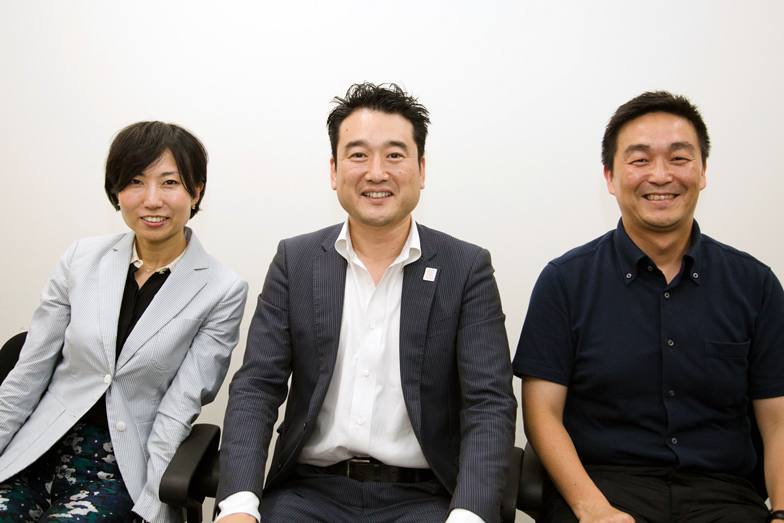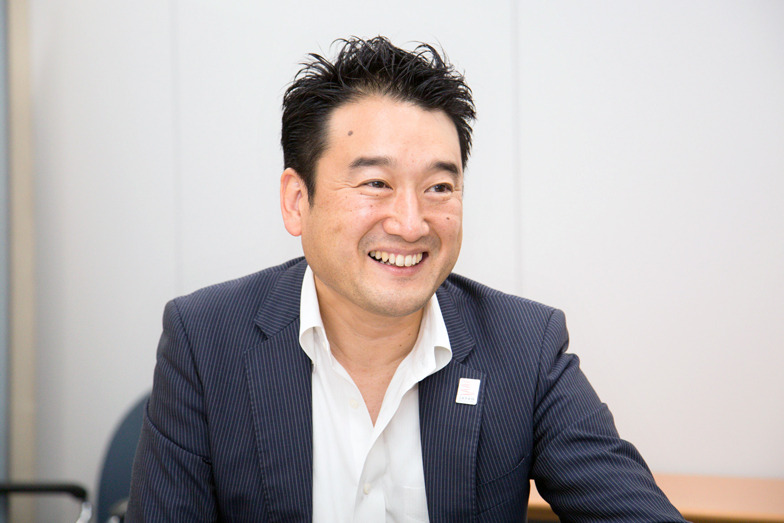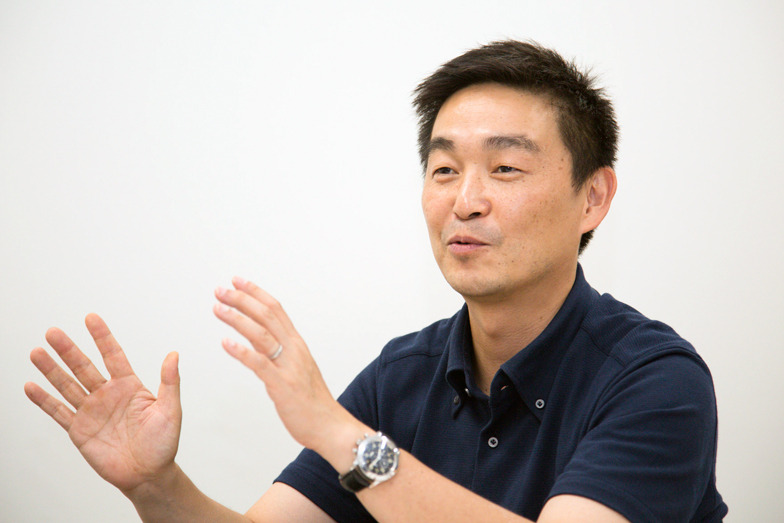The ongoing Milan International Exposition (Expo Milano) features over 140 countries and regions participating under the theme "Feeding the Planet, Energy for Life." We interviewed Ryo Baba, who worked on the "Cool Japan Design Gallery" at the Japan Pavilion within the Ministry of Economy, Trade and Industry's Expo Promotion Office.
Interview & Editing: Aki Kanahara, Dentsu Inc. Event & Space Design Bureau
Showcasing Japanese Craftsmanship and Traditional Crafts in Milan!
Urahashi: How did you envision promoting traditional crafts from across Japan as Cool Japan design to the world and connecting this with regional revitalization?
Baba: Traditional crafts and the master craftsmanship supporting them are regional resources scattered throughout Japan. By introducing them overseas, I wanted to create opportunities to further increase interest in Japan.
Urahashi: Under the title "Cool Japan Design Gallery," you're promoting the skills of regional traditional crafts by combining them with the design power of designer Oki Sato. During the planning phase, you visited workshops and saw the finished pieces from among over two hundred candidates. What were your impressions?
Baba: What struck me during one workshop visit was how often traditional crafts are compared to those from other regions. The discussion focused more on the gap in marketing than on technical or historical aspects. They clearly recognized their lack of marketing. I realized that marketing will be crucial when promoting Japan's traditional crafts globally going forward. Simultaneously, nurturing successors is a major challenge. The workshop I visited had about 20 artisans 20 years ago during a boom, but now only four remain.
Traditional crafts incorporate various ingenious techniques, making them comfortable to hold or easy to use. Precisely because they've been used daily, they've honed their skills. While 222 items are designated nationwide, despite being scattered across Japan, I realized they've simultaneously competed with each other across the country. For example, Nanbu ironware and Yamagata cast iron—they're separated by the Ou Mountains, one on the Pacific side and the other on the Sea of Japan side. Despite the distance, each developed independently. It's remarkable how wonderful techniques and traditions have been preserved throughout Japan.
Designer Oki Sato's bold designs
Urahashi: Once Mr. Ooki Sato was confirmed for design production, he presented several design proposals. What was your impression during the first meeting at the nendo office?
Baba: It was truly shocking! It was amazing. He had created prototypes using a 3D printer, and they were designs I'd never seen before. Moreover, he passionately explained his concept—that he wanted to spotlight these Japanese techniques—while continuously presenting one idea after another. He described his approach to generating ideas as looking at things from the opposite perspective.
Urahashi: What stood out most to you?
Baba: The textile woven from nautical charts was astonishing.
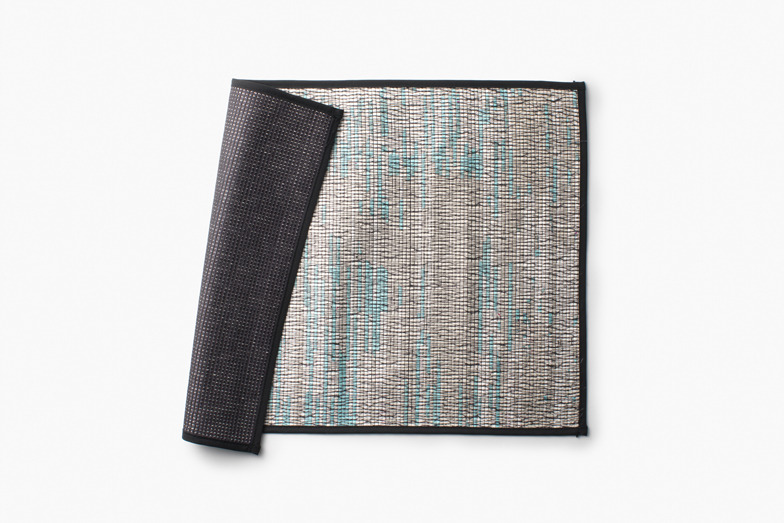
Nishijin-ori: Textile woven with nautical charts
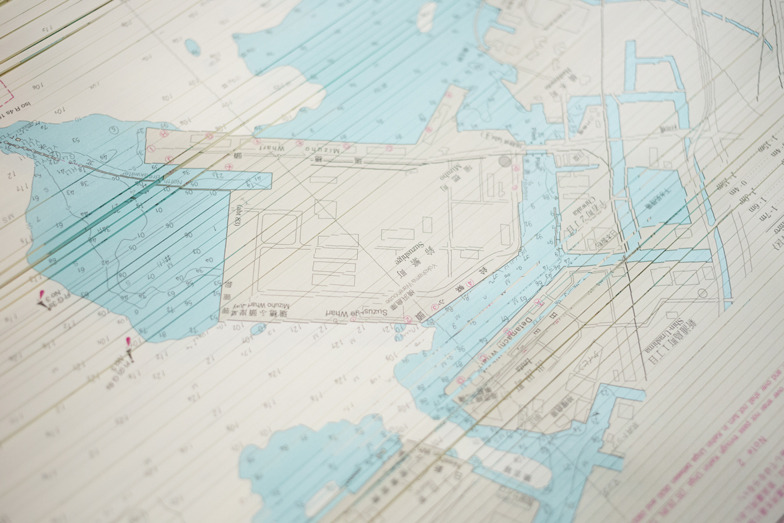
Finely shredded nautical charts
Urahashi: It's the idea that nautical charts, discarded as industrial waste, the maps of the sea themselves, could become design. Weaving warp and weft threads together over the charts, making the charts themselves the pattern—an eco-conscious design.
Baba: And since they're nautical charts, they're waterproof. It's a fusion of traditional craftsmanship and eco-consciousness. I was impressed by that perspective. Also, design-wise, the Satsuma ware small bowl "The Crack in the Egg from Which Black Seeps" was fascinating.

Satsuma ware: Vessel with black seeping from egg cracks
Urahashi: The collaboration was great too.
Baba: The Yamagata cast iron teapot has a lid. We collaborated with Yamanaka lacquerware for the lid.
Mr. Ooki's design connected the respective production areas. It was very interesting.

Yamagata Cast Iron: Cast iron where the handle conveys the temperature of the contents
Urahashi: With Ooki Sato's design and the skills of the artisans in the production region who bring it to life, wasn't it challenging to maintain their motivation over such a short period while realizing each element?
Baba: That was truly a challenge. First, if they didn't find the design interesting, they wouldn't even listen to what we had to say about the production area. On top of that, when the production area was in its busy season, even if we reached out, they showed absolutely no interest. They'd just say outright, "It's impossible."
Urahashi: We had some ideas for potential production areas based on Sato-san's vision, like ○○-yaki pottery or ○○-nuri lacquerware. But matching the designs with the right artisans required cooperation from many people. Even after finally securing a match, we then had to rigorously manage the production process. Some areas accepted the project because they resonated with Sato Ooki's designs. Others came on board because they saw it not just as a goal for the Expo, but as a long-term opportunity for regional revitalization, with the promise of ongoing sales channels.
Baba: That's right. Marketing is truly crucial. Starting this year with the Milan Expo, we aim to further promote these products globally.
Leveraging the Expo Milano outcomes for Cool Japan's future
Urahashi: How does METI envision developing Cool Japan going forward?
Baba: Even within traditional crafts, we can sell them in ways suited to each of three distinct types: traditional designs from the past, modern designs of today, and new designs for the future—what we call NEW DENSAN. We're also considering presenting older items in new ways to showcase them externally. The Traditional Crafts Industry Promotion Association established a "Traditional Crafts Milan Square" within the city of Milan.
Urahashi: A pop-up shop, right?
Baba: It runs during the Milan Expo period, from May 1st to October 31st. By setting it up for a fixed period, they can attract Expo visitors while thoroughly testing how DENSAN is received in the overseas market. I also hope collaborations between traditional crafts and various other fields increase going forward. It's not just creators; collaborations are emerging between mega-brands like Louis Vuitton and Hermès and traditional crafts. Louis Vuitton, for instance, partnered with Wajima lacquerware to create lacquered accessory cases. Amidst this, the issue of finding successors must be resolved for future development. People in the production areas expressed a strong sense of crisis, saying, "If things continue like this, the techniques themselves will disappear."

Zhang: Kyoto's dyeing techniques also face the risk of losing successors. There's a special program where young people with passion are hired as administrative staff by the ward office and other government bodies. They receive support for basic living expenses while learning and inheriting traditional techniques as their job. It seems we've reached a point where such measures are necessary.
Baba: It's difficult to produce each individual case, including identifying which techniques should be passed on.
Urahashi: At the press conference, Mr. Sato Ooki, along with over a dozen workshop leaders and master artisans from the production area, attended. President Masashi Kaneko of Genemon Kiln spoke on their behalf, and his remarks were truly excellent.
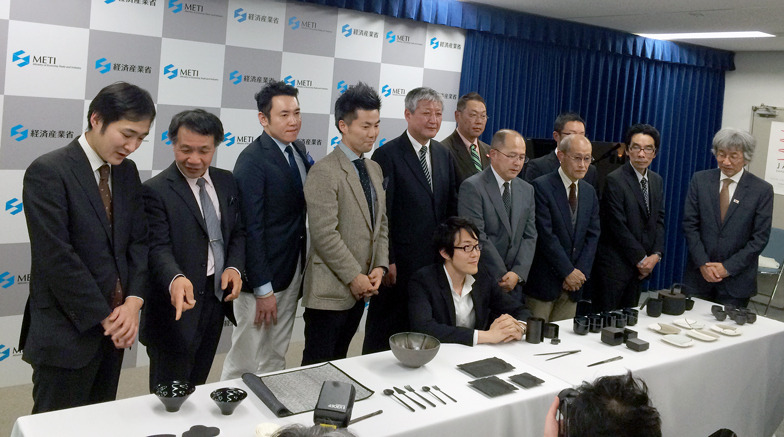
Scene from the press conference
Baba: I really felt the craftsman's strong determination—once he takes on a job, he'll see it through no matter what.
Zhang: Going forward, I hope this leads to projects connecting not just Mr. Sato, but various creators with traditional crafts.
Urahashi: Did you visit the Milan Expo after it opened?
Baba: I did. Take the black sake cup, for example. If you get a little closer, you see the pattern. Get even closer, and you just want to touch it. You can't usually touch things in a museum, right? But at the Cool Japan Design Gallery, you can touch the pieces. On the flip side, there's a pretty high chance they could break, though.
Urahashi: Usually, they'd put up partitions or cover things in glass cases because it's dangerous. This time, the Ministry of Economy, Trade and Industry made the conscious decision: "Alright, let's do it."
Baba: They wanted visitors to get close and see the master craftsman's skill.
Zhang: Mr. Sato also wanted people to see these designs up close this time—to appreciate the beauty of functional design and the appeal of everyday objects.
Baba: The efforts of many people finally came together to make the Milan Expo happen. We want to build on this momentum to promote a new Cool Japan and further develop traditional crafts.
<End>






